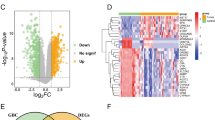Abstract
Purpose
The newly-identified lysosomal protein transmembrane 4 beta-35 (LAPTM4B-35) plays important roles in tumor progression and metastasis, while argininosuccinate synthetase (ASS) provides arginine as an indispensable nutrient for hepatocellular carcinoma (HCC). The present study investigated the clinical significance of the coexpression of LAPTM4B-35 and ASS in HCC patients on determining the prognosis.
Methods
Immunohistochemistry was used to evaluate the expression of LAPTM4B-35 and ASS in HCC tissues and paired noncancerous liver samples from 71 patients. The correlation of combined LAPTM4B-35 and ASS expression with selected clinicopathologic parameters was assessed with the chi-squared test. Patient survival and differences in survival were determined by the Kaplan-Meier method and the log-rank test. A Cox regression analysis was adopted for a multivariate analysis of the prognostic factors.
Results
Combined LAPTM4B-35 and ASS expression was significantly associated with TNM stage and portal vein invasion. In addition, patients with HCCs expressing both LAPTM4B-35 and ASS exhibited both markedly poorer overall survival (OS) and disease-free survival (DFS) (both P < 0.001). According to the multivariate analyses, combined LAPTM4B-35 and ASS expression was found to be an independent prognostic factor for OS and DFS (P = 0.039 and P = 0.035, respectively).
Conclusion
The overexpression of LAPTM4B-35 in combination with positive ASS expression is a negative prognostic marker for HCC.
Similar content being viewed by others
References
Parkin DM, Bray F, Ferlay J, Pisani P. Global cancer statistics, 2002. CA Cancer J Clin 2005;55:74–108.
El-Serag HB, Mason AC, Key C. Trends in survival of patients with hepatocellular carcinoma between 1977 and 1996 in the United States. Hepatology 2001;33:62–75.
Vainer GW, Pikarsky E, Ben-Neriah Y. Contradictory functions of NF-kappaB in liver physiology and cancer. Cancer Lett 2008;267:182–188.
Douglass EC. Hepatic malignancies in childhood and adolescence (hepatoblastoma, hepatocellular carcinoma, and embryonal sarcoma). Cancer Treat Res 1997;92:201–212.
Shao GZ, Zhou RL, Zhang QY, Zhang Y, Liu JJ, Rui JA, et al. Molecular cloning and characterization of LAPTM4B, a novel gene upregulated in hepatocellular carcinoma. Oncogene 2003;22:5060–5069.
Peng C, Zhou RL, Shao GZ, Rui JA, Wang SB, Lin M, et al. Expression of lysosome-associated protein transmembrane 4B-35 in cancer and its correlation with the differentiation status of hepatocellular carcinoma. World J Gastroenterol 2005;11:2704–2708.
Yang H, Xiong FX, Lin M, Yang Y, Nie X, Zhou RL. LAPTM 4B-35 overexpression is a risk factor for tumor recurrence and poor prognosis in hepatocellular carcinoma. J Cancer Res Clin Oncol 2010;136:275–281.
Liu X, Xiong F, Wei X, Yang H, Zhou R. LAPTM4B-35, a novel tetratransmembrane protein and its PPRP motif play critical roles in proliferation and metastatic potential of hepatocellular carcinoma cells. Cancer Sci 2009;100:2335–2340.
Ito T, Shiraki K, Sekoguchi K, Yamanaka T, Sugimoto K, Takase K, et al. Hepatocellular carcinoma associated with adult-type citrullinemia. Dig Dis Sci 2000;45:2203–2206.
Dillon BJ, Prieto VG, Curley SA, Ensor CM, Holtsberg FW, Bomalaski JS, et al. Incidence and distribution of argininosuccinate synthetase deficiency in human cancers: a method for identifying cancers sensitive to arginine deprivation. Cancer 2004;100:826–833.
Miyazaki K, Takaku H, Umeda M, Fujita T, Huang WD, Kimura T, et al. Potent growth inhibition of human tumor cells in culture by arginine deiminase purified from a culture medium of a Mycoplasma-infected cell line. Cancer Res 1990;50:4522–4527.
Wheatley DN, Campbell E. Arginine deprivation, growth inhibition and tumour cell death: 3. Deficient utilisation of citrulline by malignant cells. Br J Cancer 2003;89:573–576.
Grabon W. Arginine as a crucial amino acid in carcinogenesis and tumor growth. Postepy Hig Med Dosw (Online) 2006;60:483–489.
Yang Y, Yang H, McNutt MA, Xiong F, Nie X, Li L, et al. LAPTM4B overexpression is an independent prognostic marker in ovarian carcinoma. Oncol Rep 2008;20:1077–1083.
Morris SM Jr. Regulation of enzymes of the urea cycle and arginine metabolism. Annu Rev Nutr 2002;22:87–105.
Wu G, Morris SM Jr. Arginine metabolism: nitric oxide and beyond. Biochem J 1998;336(Pt 1):1–17.
Husson A, Brasse-Lagnel C, Fairand A, Renouf S, Lavoinne A. Argininosuccinate synthetase from the urea cycle to the citrulline-NO cycle. Eur J Biochem 2003;270:1887–1899.
Ensor CM, Holtsberg FW, Bomalaski JS, Clark MA. Pegylated arginine deiminase (ADI-SS PEG20 000 mw) inhibits human melanomas and hepatocellular carcinomas in vitro and in vivo. Cancer Res 2002;62:5443–5450.
Yoon CY, Shim YJ, Kim EH, Lee JH, Won NH, Kim JH, et al. Renal cell carcinoma does not express argininosuccinate synthetase and is highly sensitive to arginine deprivation via arginine deiminase. Int J Cancer 2007;120:897–905.
Sugimura K, Ohno T, Kusuyama T, Azuma I. High sensitivity of human melanoma cell lines to the growth inhibitory activity of mycoplasmal arginine deiminase in vitro. Melanoma Res 1992;2:191–196.
Scott L, Lamb J, Smith S, Wheatley DN. Single amino acid (arginine) deprivation: rapid and selective death of cultured transformed and malignant cells. Br J Cancer 2000;83:800–810.
Wheatley DN, Campbell E. Arginine catabolism, liver extracts and cancer. Pathol Oncol Res 2002;8:18–25.
Feun L, You M, Wu CJ, Kuo MT, Wangpaichitr M, Spector S, et al. Arginine deprivation as a targeted therapy for cancer. Curr Pharm Des 2008;14:1049–1057.
Cheng PN, Lam TL, Lam WM, Tsui SM, Cheng AW, Lo WH, et al. Pegylated recombinant human arginase (rhArg-peg5 000 mw) inhibits the in vitro and in vivo proliferation of human hepatocellular carcinoma through arginine depletion. Cancer Res 2007;67:309–317.
Izzo F, Montella M, Orlando AP, Nasti G, Beneduce G, Castello G, et al. Pegylated arginine deiminase lowers hepatitis C viral titers and inhibits nitric oxide synthesis. J Gastroenterol Hepatol 2007;22:86–91.
Qin LX, Tang ZY. Recent progress in predictive biomarkers for metastatic recurrence of human hepatocellular carcinoma: a review of the literature. J Cancer Res Clin Oncol 2004;130: 497–513.
Author information
Authors and Affiliations
Additional information
H.Y. and M.L. contributed equally to this work.
Rights and permissions
About this article
Cite this article
Yang, H., Lin, M., Xiong, F. et al. Combined lysosomal protein transmembrane 4 beta-35 and argininosuccinate synthetase expression predicts clinical outcome in hepatocellular carcinoma patients. Surg Today 41, 810–817 (2011). https://doi.org/10.1007/s00595-010-4338-5
Received:
Accepted:
Published:
Issue Date:
DOI: https://doi.org/10.1007/s00595-010-4338-5




